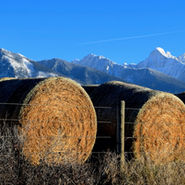

A Visit to Rich Chambers' Jocko Site - Arlee, MT
Last week I had the pleasure of a day in the field with Rich Chambers and Larry Smith. Rich did early work on Glacial Lake Missoula...


Sill Injectites w/ Shattered Fills - Indian Creek, WA
At Indian Creek, WA I discovered 3 breccia-filled sills injected into varved Glacial Lake Columbia sediments, each extending for more...


Dike-Sill-Dike Geometry in a Fluid-Driven, Sediment-filled Fracture
Coarse Grained Layers Behave as Efficient Pathways - Coarse grained layers appear to behave as efficient pathways during propagation of...


Scabland Evolution: Building on Perron & Venditti (2016)
In their 2016 Nature News & Views article titled "Megafloods downsized", Perron and Venditti remind us that the sizes of individual...


Paper Locations
Nearly 100 articles published over the past century mention clastic dikes in the megaflood region. Most did not focus on the dikes, but...


Two Generations of Clastic Dikes in Touchet Valley, WA
An excellent outcrop located along Touchet River Road North, some 13 miles north of Touchet, WA exposes two sets of clastic dikes. The...


Predicting liquefaction extent in the Yakima Fold Belt
Geologists have long debated how large of an earthquake Yakima Fold Belt faults can produce. Some claim these shallow (<10km), intraplate...










